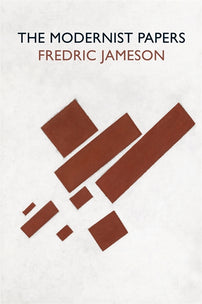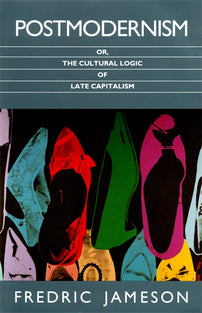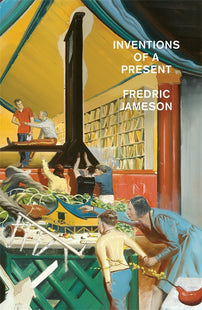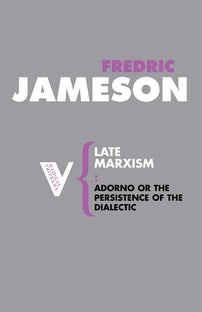Rereading “On Rereading Doktor Faustus”
For our Jameson at 90 series, Nicholas Brown returns to Fredric Jameson's essay, "On Rereading Doktor Faustus" from his essay collection The Modernist Papers.

A certain sort of reader — I am talking about myself — has experienced the publication of omnibus Jamesonian essay collections as a periodic and gratifying fact of life and has greeted each new one with a particular kind of anxious anticipation. The approach is all wrong, but, for some of us — if I am not alone — inescapable. We don’t want to know, not yet, what Jameson’s argument is about Joyce, or about De Kooning. We want to know what Fred has to say about Das Lied von der Erde, or about Doktor Faustus. We read with impatience the epic introduction situating the reading itself in historical time, and while we register that there is an argument being made, it recedes into the background. We are looking for something else — the formal aperçus that, by the end of the essay, will turn out to be the evidence on which the argument rests. Readers like me — if there are others — will recognize the dramatic acceleration with which these essays generally conclude, when details and apparent digressions that have built up over the course of the discussion are rapidly gathered into a thesis with which the essay ends rather than begins. Such readers — this is a confession — read the final page with a mental nod, something like “yes, that seems right” without quite grasping how the aperçus and apparent digressions add up to the conclusion. To put the pieces back together requires a second reading.
“On Rereading Doktor Faustus” begins in epic — is Thomas Mann relevant to the present? — and ends with the familiar downhill rush. Given Jameson’s monumental contributions to critical theory, it is understandable that his specifically literary accomplishment — the accumulation of aperçus that becomes his own raw material — is, it seems to me, relatively undervalued. But Fred has plenty to say about Doktor Faustus. Particularly striking is his reading of the peculiar mode in which the novel is written, often resembling, in the narrator Zeitblom’s patently artificial reconstructions, more of a series of related yarns than a novel: nothing of the novelistic worldmaking of Buddenbrooks. But Jameson shows, startlingly, how this mode is made to dovetail with the technique Mann identified in his own work with montage: refashioning other people’s faces, other people’s ideas about serialism, other people’s memories of a disastrous musical evening, into something like a coherent whole — but leaving them quite recognizable and without any great effort to dissimulate the seams. The quotations or pastiches turn out to underwrite the narrative, such that the narrative itself becomes irrelevant or merely illustrative, its putative point having been both condensed into and superseded by the interpolated element.
[book-strip index="1"]
Jameson next turns, sixteen years after the publication of The Political Unconscious, to allegory. Doktor Faustus seems to offer a choice between a tripartite allegorical structure and the fourfold one we are familiar with from The Political Unconscious. The very fact of a choice seems to suggest that here, at least, Jamesonian allegory is best thought of as a mode of attention rather than as a method. When Jameson puts his fourfold apparatus to work on Doktor Faustus, he finds not that a single narrative can be read at four different levels, but rather that to each allegorical level corresponds a different aspect of the narrative — which not only suggests a consciousness, of some kind, of these signifying levels on Mann’s part, but also their separability; suggests, that is, their reification.
One of the great questions that attaches to Doktor Faustus is its stance with regard to its object of fascination: an imagined older German sociability that is, as the other of Kantian-Goethean-Hegelian-Marxian modernity, both a utopian vision of spontaneous democracy (Leverkühn’s theory of polyphony) and obscurantist to the core, the “Romantic” kernel both of Nazi reaction and of a Heideggerian anti-modernism (and anti-Marxism) that changes form and jargon but, astonishingly, seems never to lose currency.
[book-strip index="2"]
The novel is built on the identity of these two aspects, but, without a close attention to form, the question of its attitude to the ambiguity is difficult to answer. But, in typical Jamesonian fashion — this is the secret of those precipitous conclusions — the question has already been answered. In both of the aspects discussed above, reification — in the case of montage, literally turning Lukács’s combativeness, Mahler’s face, Schoenberg’s tone row, into a thing to be refunctioned at will according to its insertion in the whole — names the form, both social and aesthetic, that governs the novel’s composition. For Mann the German, the ambivalent attraction of organic culture may be a difficult problem: he once claimed, paradoxically, to be closer to Leverkühn than he wanted anyone to know. But, unlike Leverkühn the composer, Mann the novelist — this is what makes him a modernist, and is the answer to the question of his contemporary relevance — places his chips on the same square as Marx.
See all works by Fredric Jameson here. His new book, Inventions of a Present: The Novel in its Crisis of Globalization is out on May 7.
[book-strip index="3"]




